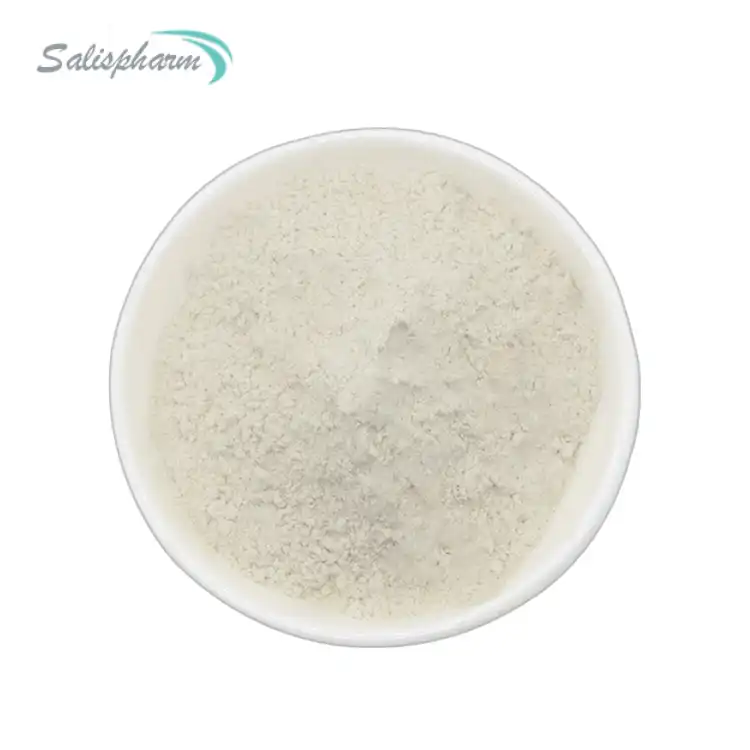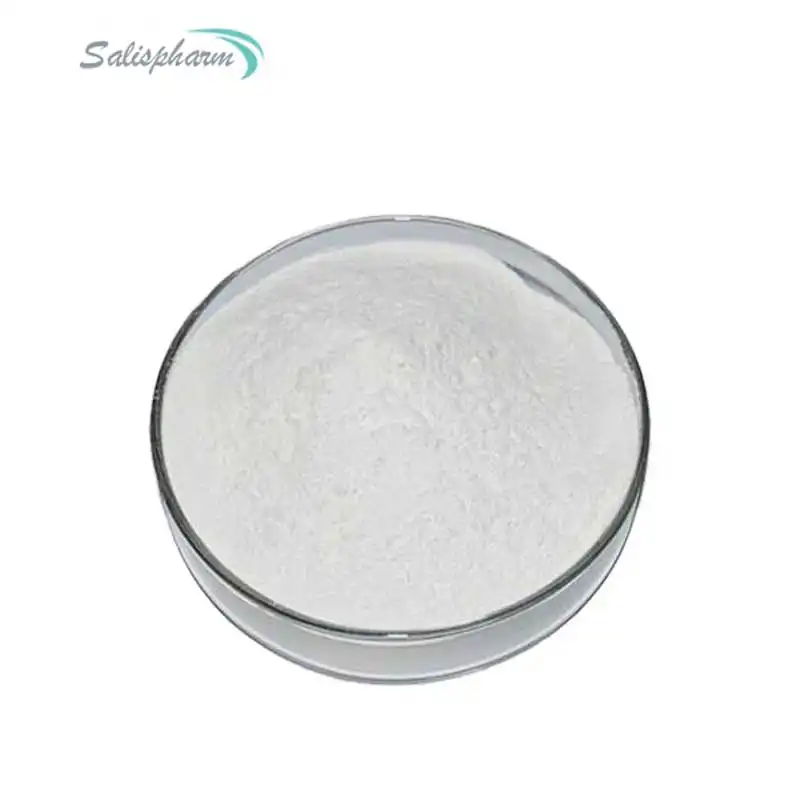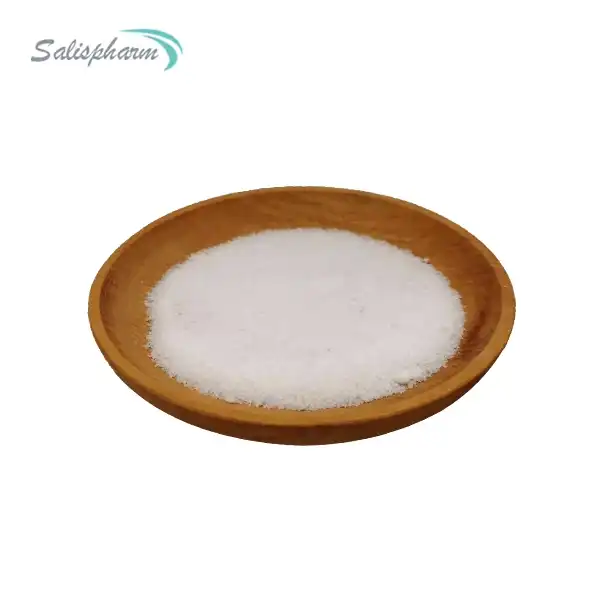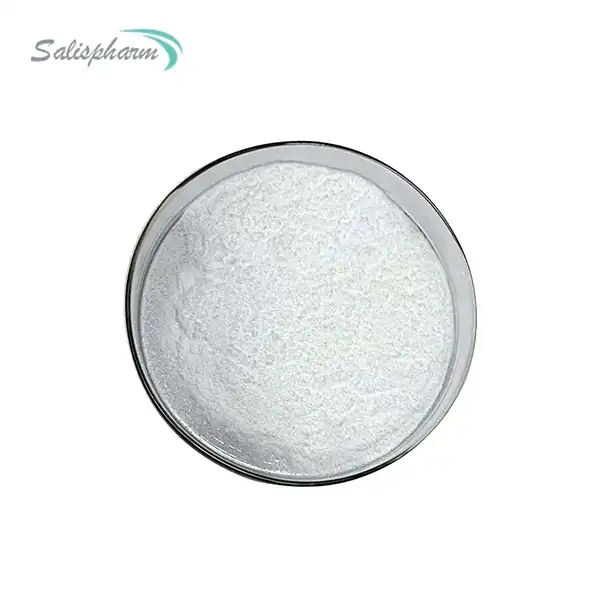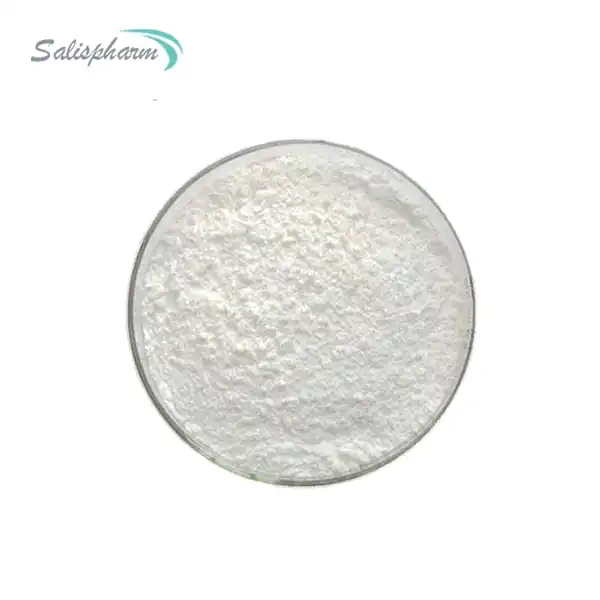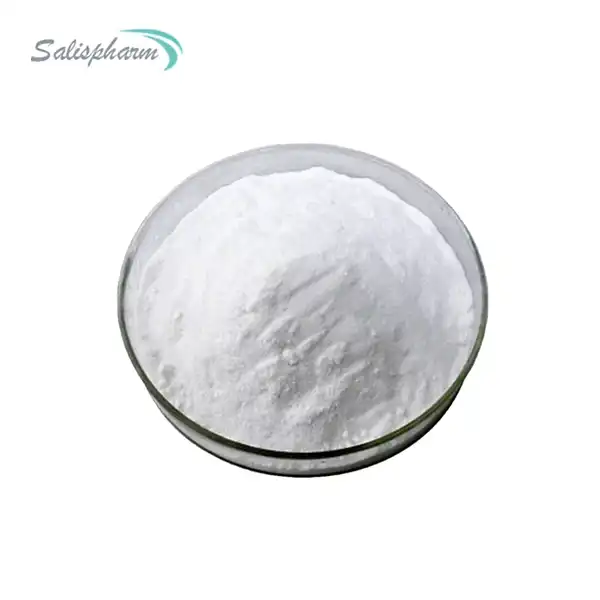Raloxifene hydrochloride powder is a selective estrogen receptor modulator (SERM) that has been widely used in the treatment of various conditions, particularly in postmenopausal women. This compound has gained significant attention due to its ability to mimic the beneficial effects of estrogen on bone and cardiovascular health while minimizing the potential risks associated with estrogen therapy, such as breast cancer and endometrial hyperplasia. In this comprehensive blog post, we will explore the nature of raloxifene hydrochloride powder, its mechanisms of action, and its diverse applications in the healthcare field.
What is the Mechanism of Action of Raloxifene Hydrochloride Powder?
Raloxifene hydrochloride powder exerts its effects by selectively binding to estrogen receptors (ERs) in target tissues. However, unlike traditional estrogen replacement therapy, raloxifene acts as an ER agonist or antagonist depending on the tissue type. In bone tissue, raloxifene exhibits agonistic properties, promoting the activity of osteoblasts (bone-building cells) and inhibiting osteoclasts (bone-resorbing cells). This mechanism helps maintain bone density and reduce the risk of osteoporosis and fractures in postmenopausal women.
On the other hand, in breast and uterine tissue, raloxifene acts as an ER antagonist, blocking the proliferative effects of estrogen. This property is particularly beneficial in reducing the risk of hormone-dependent breast cancer and endometrial hyperplasia. Additionally, raloxifene has been shown to have favorable effects on lipid metabolism, potentially lowering the risk of cardiovascular disease by improving the lipid profile.
The selective modulation of estrogen receptors by raloxifene hydrochloride powder allows for a targeted approach in addressing various health concerns associated with estrogen deficiency while minimizing the potential adverse effects of traditional hormone replacement therapy.
What are the Approved Uses of Raloxifene Hydrochloride Powder?
The primary approved use of raloxifene hydrochloride powder is for the prevention and treatment of osteoporosis in postmenopausal women. Clinical trials have demonstrated that raloxifene effectively increases bone mineral density (BMD) and reduces the risk of vertebral fractures in this population. Moreover, raloxifene has been shown to decrease the risk of invasive breast cancer in postmenopausal women with osteoporosis and those at high risk for invasive breast cancer.
In addition to its osteoporosis and breast cancer prevention applications, raloxifene hydrochloride powder has been investigated for its potential use in other conditions. Some studies have suggested that raloxifene may have beneficial effects on cardiovascular health by improving lipid profiles and reducing the risk of coronary heart disease events in postmenopausal women with increased risk factors.
While not an approved indication, researchers have also explored the use of raloxifene in the treatment of benign breast diseases, such as fibrocystic breast conditions and breast pain. However, further research is needed to establish its efficacy and safety in these applications.
What are the Potential Side Effects and Precautions with Raloxifene Hydrochloride Powder?
Like any medication, the use of raloxifene hydrochloride powder is associated with potential side effects and precautions. One of the most common side effects reported in clinical trials is hot flashes, which can be bothersome for some women. Other side effects may include leg cramps, peripheral edema (swelling), and an increased risk of venous thromboembolic events (such as deep vein thrombosis and pulmonary embolism).
It is important to note that raloxifene should not be used in women with active or past history of venous thromboembolic events, as it may increase the risk of recurrence. Additionally, raloxifene is contraindicated in women with liver disease or unexplained uterine bleeding.
Patients taking raloxifene hydrochloride powder should undergo regular breast examinations and mammograms, as the drug may increase the risk of breast cancer in some individuals. Close monitoring of bone mineral density and lipid profiles is also recommended during treatment.
It is crucial for healthcare professionals to carefully assess the potential benefits and risks of raloxifene therapy for each individual patient, considering their medical history, risk factors, and overall health status.
Conclusion
Raloxifene hydrochloride powder has emerged as a valuable therapeutic option for postmenopausal women, offering a unique approach to address various health concerns related to estrogen deficiency. Its selective estrogen receptor modulation properties make it particularly useful in the prevention and treatment of osteoporosis and reducing the risk of invasive breast cancer. However, it is essential to carefully consider the potential side effects and precautions associated with its use, and to closely monitor patients during treatment. As with any medication, a thorough risk-benefit analysis should be conducted by healthcare professionals to ensure the safety and efficacy of raloxifene therapy for individual patients.
If you are also interested in this product and want to know more product details, or want to know about other related products, please feel free to contact iceyqiang@gmail.com.
References:
1. Delmas PD, Ensrud KE, Adachi JD, et al. Efficacy of raloxifene on vertebral fracture risk reduction in postmenopausal women with osteoporosis: four-year results from a randomized clinical trial. J Clin Endocrinol Metab. 2002;87(8):3609-3617.
2. Ettinger B, Black DM, Mitlak BH, et al. Reduction of vertebral fracture risk in postmenopausal women with osteoporosis treated with raloxifene: results from a 3-year randomized clinical trial. JAMA. 1999;282(7):637-645.
3. Cummings SR, Eckert S, Krueger KA, et al. The effect of raloxifene on risk of breast cancer in postmenopausal women: results from the MORE randomized trial. JAMA. 1999;281(23):2189-2197.
4. Barrett-Connor E, Mosca L, Collins P, et al. Effects of raloxifene on cardiovascular events and breast cancer in postmenopausal women. N Engl J Med. 2006;355(2):125-137.
5. Goldstein SR, Siddhanti S, Ciaccia AV, Plouffe L. A randomized double-blind placebo-controlled pilot study to evaluate the safety and efficacy of raloxifene in women with fibrocystic breast disease. J Womens Health Gend Based Med. 2000;9(10):1089-1098.
6. Palacios S, Calaf J, Wakefield J, et al. Efficacy and safety of raloxifene in postmenopausal women with fibrocystic breast disease: a randomized, placebo-controlled clinical trial. Climacteric. 2003;6(3):226-233.
7. Siris ES, Harris ST, Eastell R, et al. Skeletal effects of raloxifene after 8 years: results from the continuing outcomes relevant to Evista (CORE) study. J Bone Miner Res. 2005;20(9):1514-1524.
8. Cauley JA, Norton L, Lippman ME, et al. Continued breast cancer risk reduction in postmenopausal women treated with raloxifene: 4-year results from the MORE trial. Multiple outcomes of raloxifene evaluation. Breast Cancer Res Treat. 2001;65(2):125-134.
9. Vogel VG, Costantino JP, Wickerham DL, et al. Effects of tamoxifen vs raloxifene on the risk of developing invasive breast cancer and other disease outcomes: the NSABP Study of Tamoxifen and Raloxifene (STAR) P-2 trial. JAMA. 2006;295(23):2727-2741.
10. Cranney A, Adachi JD. Benefit-risk assessment of raloxifene in postmenopausal osteoporosis. Drug Saf. 2005;28(8):721-730.

